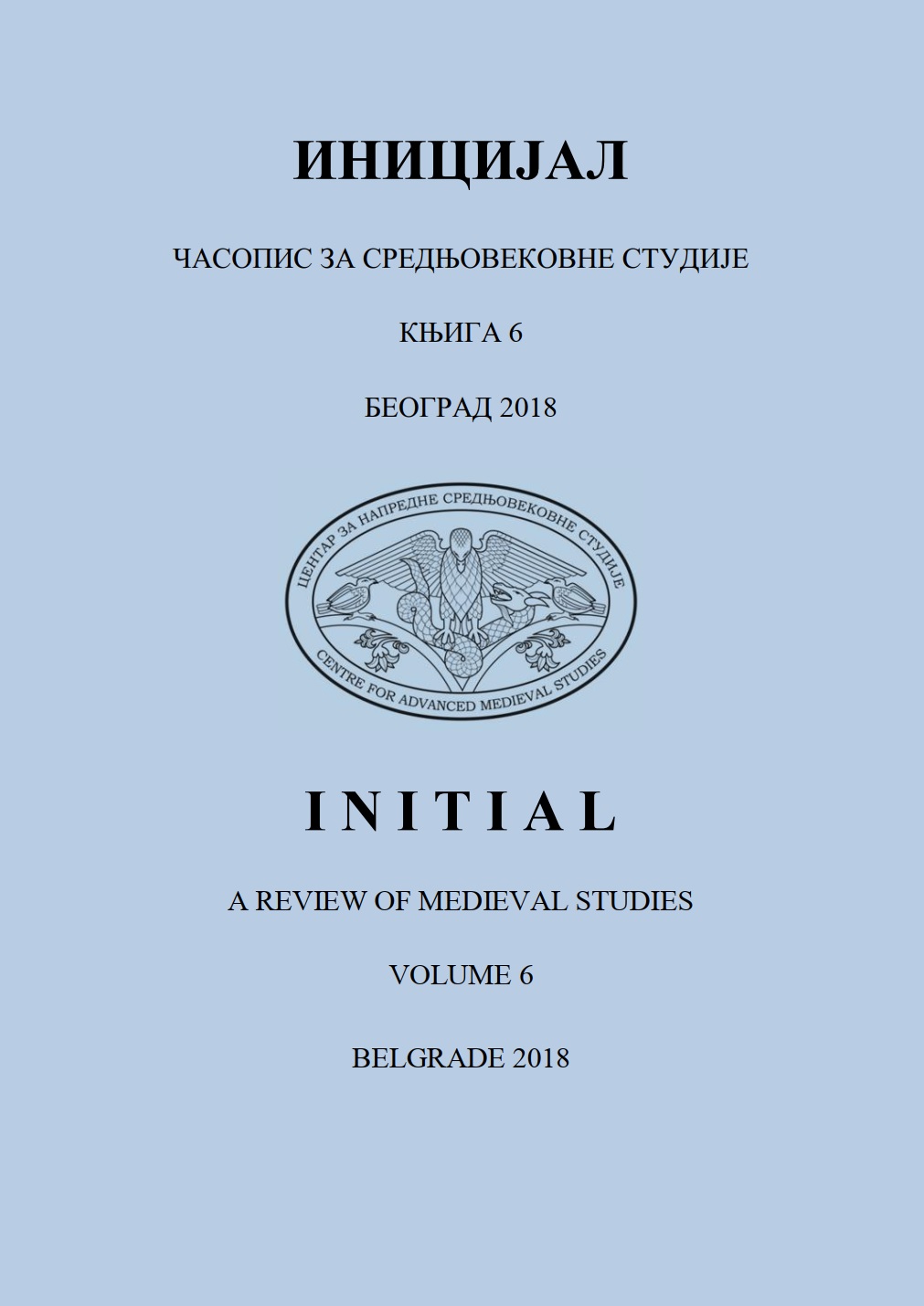Почетак рецепције Теодосијевог Житија Светог Саве и Похвале Светим Симеону и Сави у руској књижевности
The Beginnings оf the Reception of Theodosius’s Life of St. Sava and Encomium on Sts. Symeon and Sava in Russian Literature
Author(s): Branislav TodićSubject(s): History, Middle Ages, Russian Literature, Serbian Literature, 15th Century
Published by: Центар за напредне средњовековне студије
Keywords: Literary reception; 15th century; Serbian literature; Theodosius; Russian literature; Epiphanius the Wise
Summary/Abstract: The Life of St Sava of Serbia penned by Theodosius and his Encomium on Sts Symeon and Sava reached Russia around 1420 at the latest since it is from that date on that they began to be included in Russian literary works. Both texts were contained in a manuscript which was closest to the type exemplified by the 1643 Chilandar codex no. 509, which suggests that it was brought to Russia from Mount Athos. The Encomium it contained was of the short type, albeit somewhat more complete than the one in Cod. Chil. 509. The manuscript has not survived, nor is there any known copy of it, but there is no doubt that it was much read, as evidenced by its reception in Russian literature. The earliest known use of Theodosius’s Encomium on Sts Symeon and Sava has been dated around to 1420, when the monk Epiphanius the Wise of the Trinity monastery near Moscow included a portion of it in his Encomium on Venerable Sergius. This fact allows us to make the cautious assumption that it was to this Russian monastery that Theodosius’s Life and Encomium was originally brought. The other texts whose authors made use of Theodosius might have also been written there: the prologue to the Life of St Sabbas the Sanctified and the Encomium on Sts Euthymius the Great and Sabbas the Sanctified written between 1420 and 1480. These texts made borrowings from two works of the Byzantine writer Cyril of Scythopolis and two works of the Serbian writer Theodosius, which suggests that they were written at a centre which possessed a well-equipped library. Epiphanius made use of the introductory passages of Theodosius’s Encomium in a fair manner and, with a few minor interventions, put them in the proper place in his Encomium on St Sergius. Similar was the approach of the first author of the prologue to the Life of St Sabbas the Sanctified, who borrowed almost the entire prologue from Theodosius’s Life of St Sava of Serbia, whereas a subsequent redactor of the Russian prologue made much more alterations in the texts borrowed both from Theodosius and from Cyril of Scythopolis. The redactor of the Encomium on Sts Euthymius and Sabbas the Sanctified went the farthest in changing Theodosius’s Encomium to Sts Symeon and Sava by shortening, supplementing and in other ways altering his text. A turning point in the reception of Theodosius’s work occured in the first decades of the 16th century, when the cult of St Sava of Serbia took root in Russia. Theodosius’s Life with full Encomium, which had been brought to Grand Prince Basil III from Mount Athos in 1517, began to be copied frequently, and so was his Service to St Sava which had already been known in Russia. In parallel with new transcriptions of the Life and Encomium from the 1517 protograph and their new reception in the 16th century, Russian compositions based on the manuscript of Theodosius’s Life of St Sava and Encomium on Sts Symeon and Sava which had arrived in Russia earlier (before 1420) were also copied.
Journal: Иницијал. Часопис за средњовековне студије
- Issue Year: 2018
- Issue No: 6
- Page Range: 101-122
- Page Count: 22
- Language: Serbian

